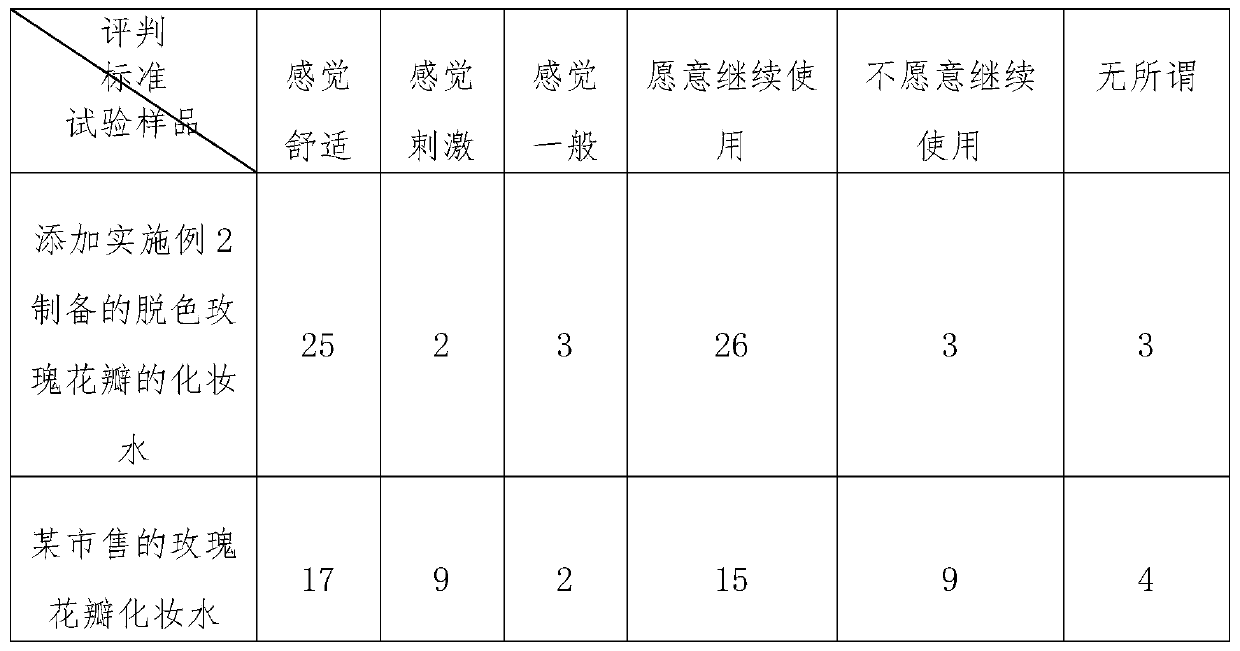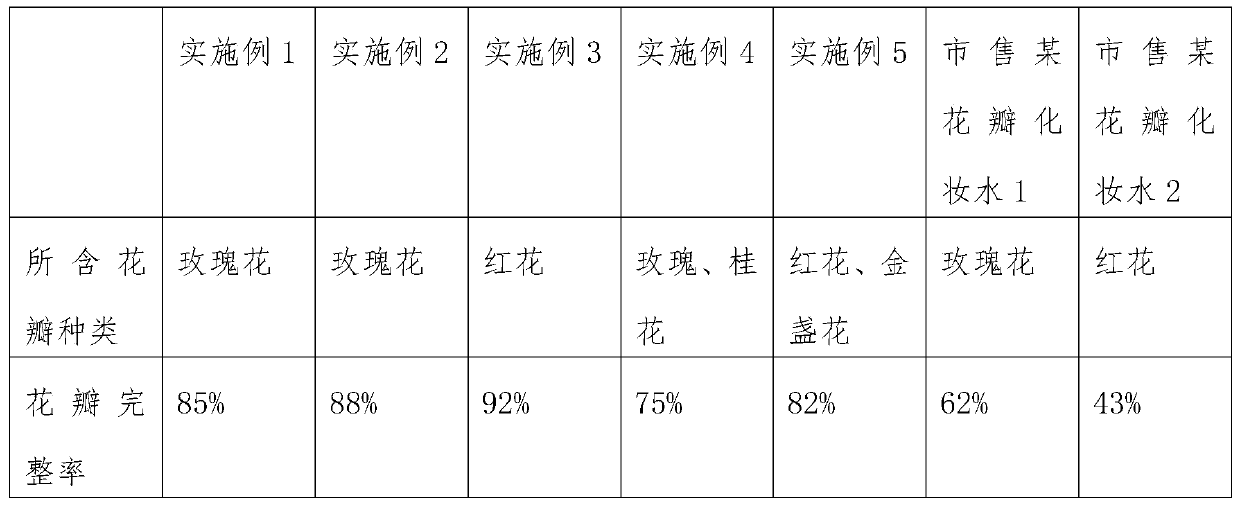Decoloring method for plant petals
A technology of plant petals and petals, which is applied in pharmaceutical formulas, skin care preparations, cosmetics, etc., can solve problems such as skin damage, alcohol residue, and difficult plant petals, and achieve the effect of ensuring integrity and good appearance
- Summary
- Abstract
- Description
- Claims
- Application Information
AI Technical Summary
Problems solved by technology
Method used
Image
Examples
Embodiment 1
[0072] Take 0.1 parts by weight of rose petals into the container; take 80 parts by weight of water into the container; take 3 parts by weight of glycerin and 4 parts of propylene glycol into the mixing container, and mix well.
[0073] Stir at a rotation speed of 10r / min and heat to 80°C, and the heating process is 20 minutes. After decolorizing at a temperature of 80° C. for 10 minutes, filtration was performed to obtain decolorized rose petals and filtrate, and the decolorized plant rose petals and filtrate were collected.
[0074] Repeat the above steps twice to obtain completely decolorized rose petals.
Embodiment 2
[0076] Take 0.3 parts by weight of rose petals into the container; take 85 parts by weight of water into the container; take 6 parts by weight of glycerin and 8 parts of propylene glycol into the mixing container, and mix well.
[0077] Stir at a rotation speed of 13r / min and heat to 85°C, and the heating process is 25 minutes. After being kept at a temperature of 85° C. and decolorizing for 60 minutes, it was filtered to obtain decolorized rose petals and filtrate, and the decolorized rose petals and filtrate were collected.
[0078] Repeat the above steps three times to obtain completely decolorized rose petals.
Embodiment 3
[0080] Take 0.5 parts by weight of safflower petals into the container; take 90 parts by weight of water into the container; take 8 parts by weight of glycerin and 10 parts of propylene glycol into the mixing container, and mix well.
[0081] Stir at a rotation speed of 15r / min and heat to 90°C, and the heating process is 30 minutes. After being kept at a temperature of 90° C. and decolorizing for 120 minutes, it was filtered to obtain decolorized safflower petals and filtrate, and the decolorized safflower petals and filtrate were collected.
[0082] Repeat the above steps four times to obtain completely decolorized safflower petals.
PUM
 Login to View More
Login to View More Abstract
Description
Claims
Application Information
 Login to View More
Login to View More - R&D
- Intellectual Property
- Life Sciences
- Materials
- Tech Scout
- Unparalleled Data Quality
- Higher Quality Content
- 60% Fewer Hallucinations
Browse by: Latest US Patents, China's latest patents, Technical Efficacy Thesaurus, Application Domain, Technology Topic, Popular Technical Reports.
© 2025 PatSnap. All rights reserved.Legal|Privacy policy|Modern Slavery Act Transparency Statement|Sitemap|About US| Contact US: help@patsnap.com


